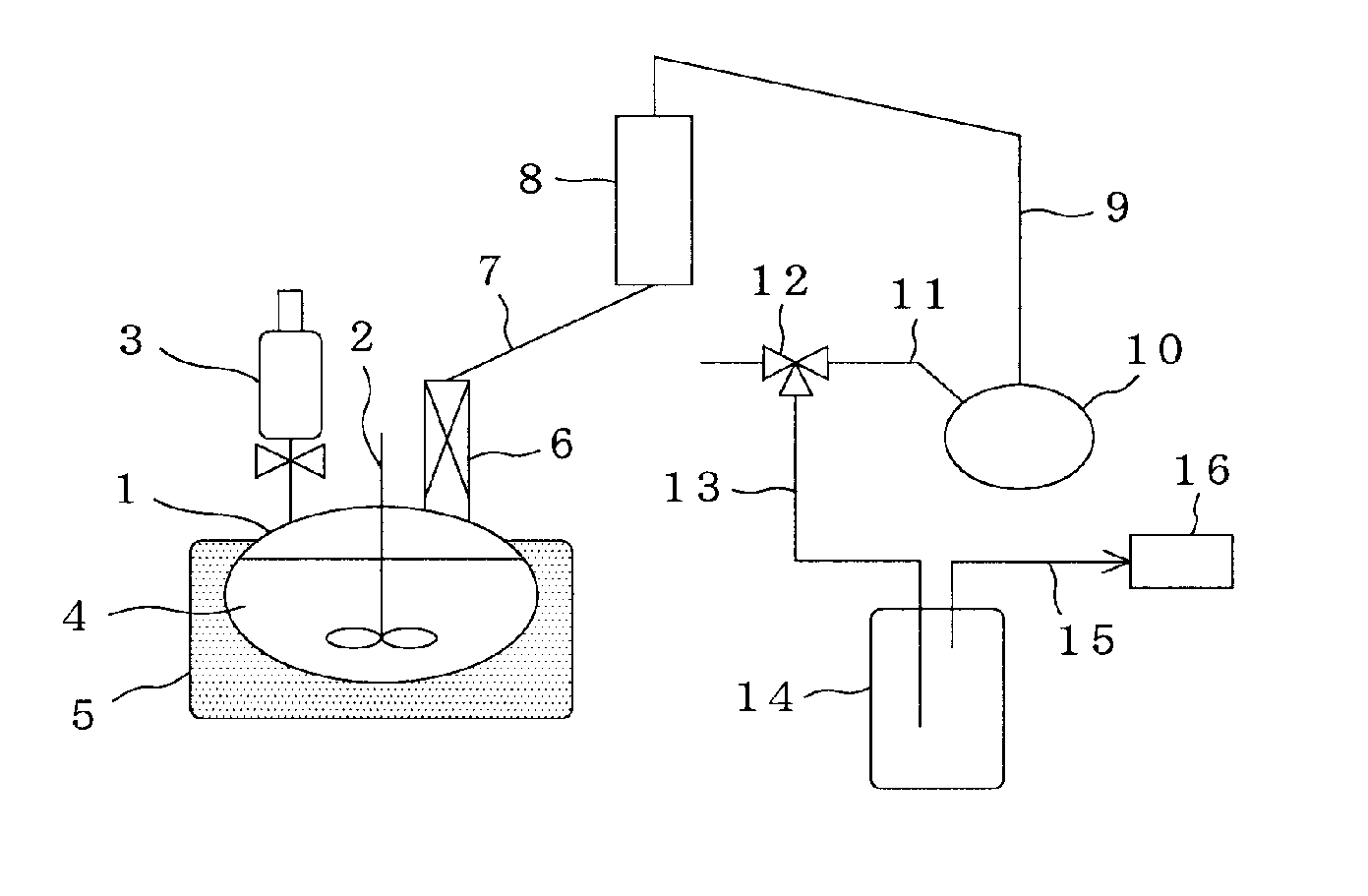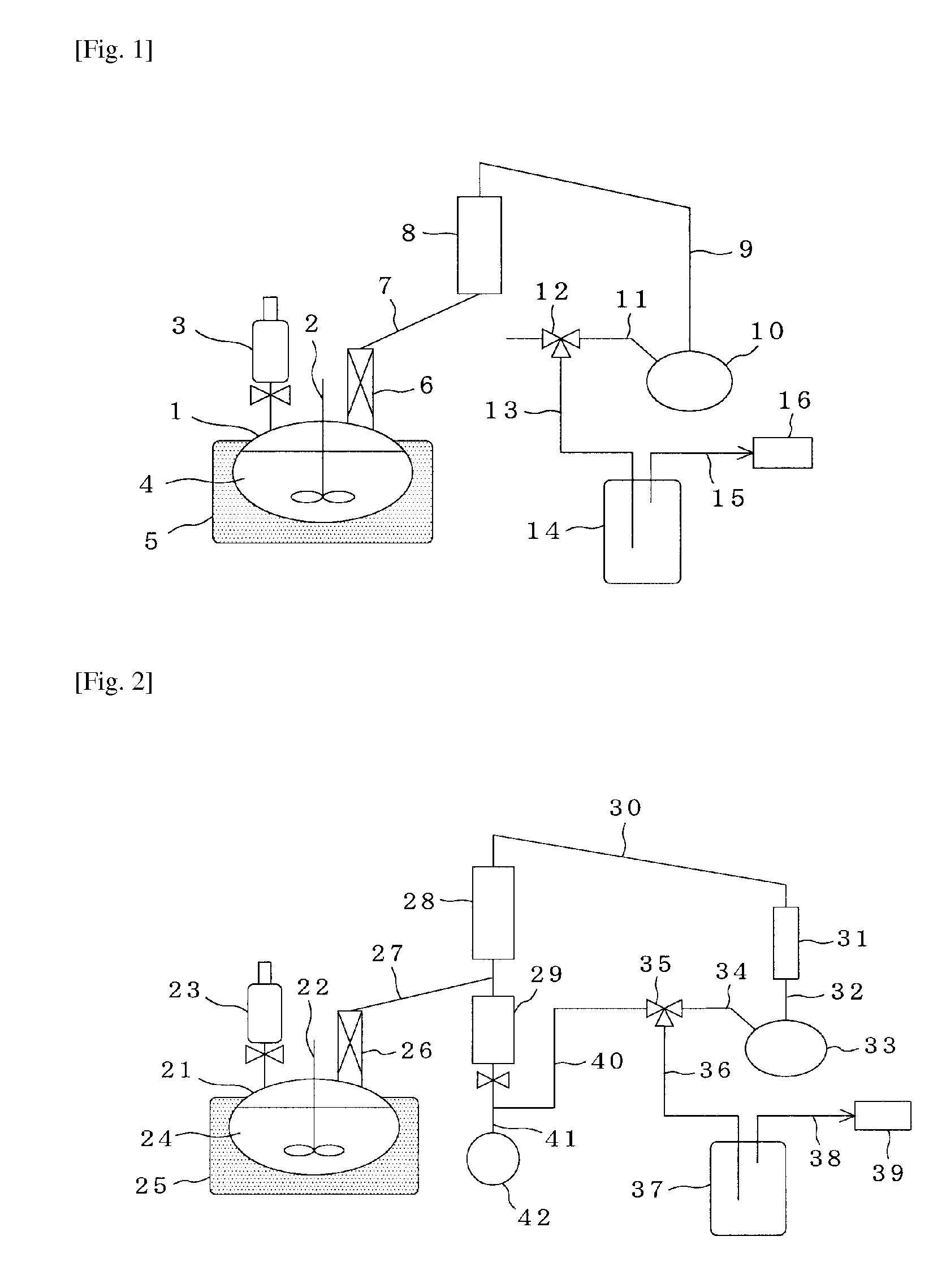Production Process of Glycolide
- Summary
- Abstract
- Description
- Claims
- Application Information
AI Technical Summary
Benefits of technology
Problems solved by technology
Method used
Image
Examples
reference example 1
Synthesis of Glycolic Acid Oligomer
[0125]A 1-liter separable flask was charged with 1 kg of a 70% aqueous solution (product of Du Pont Co.) of glycolic acid of an industrial grade. While stiffing under normal pressure, the contents were heated from room temperature to 220° C. over 4 hours to conduct a polycondensation reaction while distilling out water formed. The pressures inside the separable flask was then slowly reduced from normal pressure to 2 kPa over 1 hour, and the polycondensation reaction was continued additionally for 3 hours, thereby distilling off low-boiling matter such as an unreacted raw material and synthesizing 480 g of a glycolic acid oligomer. The melting point of this glycolic acid oligomer was 211° C.
example 1
[0128]The apparatus illustrated in FIG. 1 was used, a 500-ml flask was charged with 160 g of the glycolic acid oligomer obtained in Reference Example 1, 100 g of tetraethylene glycol dibutyl ether and 89 g of triethylene glycol monooctyl ether as a solubilizing agent, and the contents were then heated to 230° C. to form a uniform solution in the reaction system. While heating this solution at a temperature of 230° C., a total reflux operation was conducted for 3 hours under a reduced pressure of 4.5 kPa.
[0129]The apparatus illustrated in FIG. 2 was used to heat the mixture after the total reflux operation to 230° C., thereby forming a uniform solution in the reaction system. While heating this solution at a temperature of 230° C., tetraethylene glycol dibutyl ether and glycolide formed were co-distilled out under a reduced pressure of 4.5 kPa. A depolymerization reaction was conducted for 1 hour. As a result, 9.3 g of glycolide was obtained. The purity of this glycolide was analyzed...
example 2
[0134]The apparatus illustrated in FIG. 1 was used, a 500-ml flask was charged with 160 g of the glycolic acid oligomer obtained in Reference Example 1, 100 g of diethylene glycol butyl 2-chlorophenyl ether and 95 g of diethylene glycol monodecyl ether as a solubilizing agent, and the contents were then heated to 225° C. to form a uniform solution in the reaction system. While heating this solution at a temperature of 225° C., a total reflux operation was conducted for 1 hour under a reduced pressure of 4.0 kPa.
[0135]The apparatus illustrated in FIG. 2 was used to heat the mixture after the total reflux operation to 230° C., thereby forming a uniform solution in the reaction system. While heating this solution at a temperature of 225° C., diethylene glycol butyl 2-chlorophenyl ether and glycolide formed were co-distilled out under a reduced pressure of 4.0 kPa. A depolymerization reaction was conducted for 1 hour. As a result, 10.9 g of glycolide was obtained. The purity of this gly...
PUM
 Login to View More
Login to View More Abstract
Description
Claims
Application Information
 Login to View More
Login to View More - R&D
- Intellectual Property
- Life Sciences
- Materials
- Tech Scout
- Unparalleled Data Quality
- Higher Quality Content
- 60% Fewer Hallucinations
Browse by: Latest US Patents, China's latest patents, Technical Efficacy Thesaurus, Application Domain, Technology Topic, Popular Technical Reports.
© 2025 PatSnap. All rights reserved.Legal|Privacy policy|Modern Slavery Act Transparency Statement|Sitemap|About US| Contact US: help@patsnap.com



